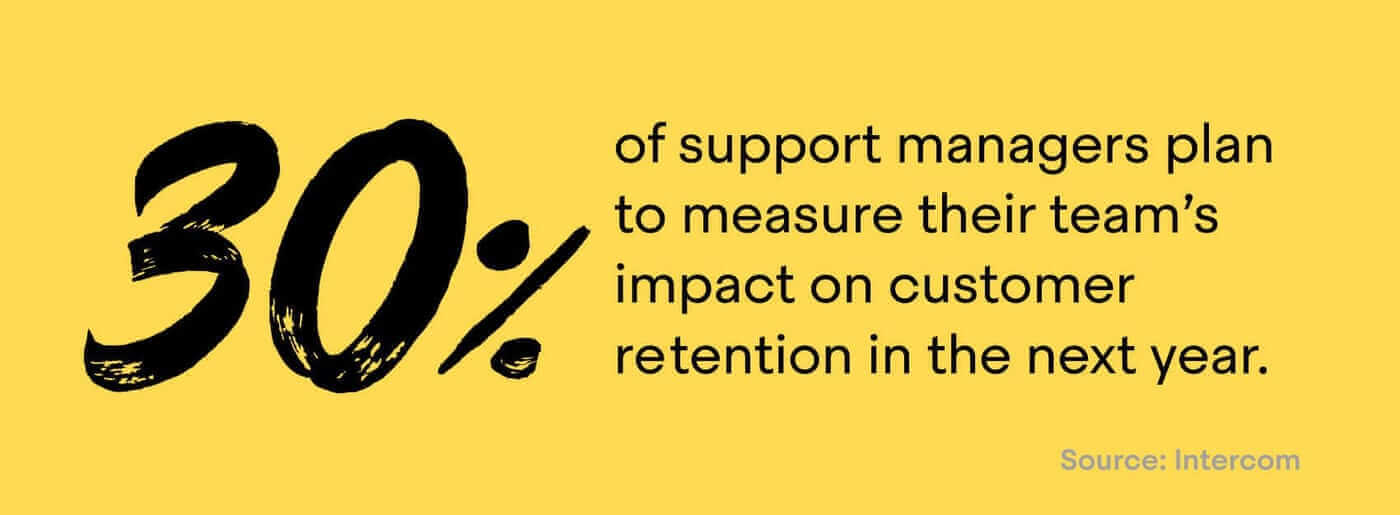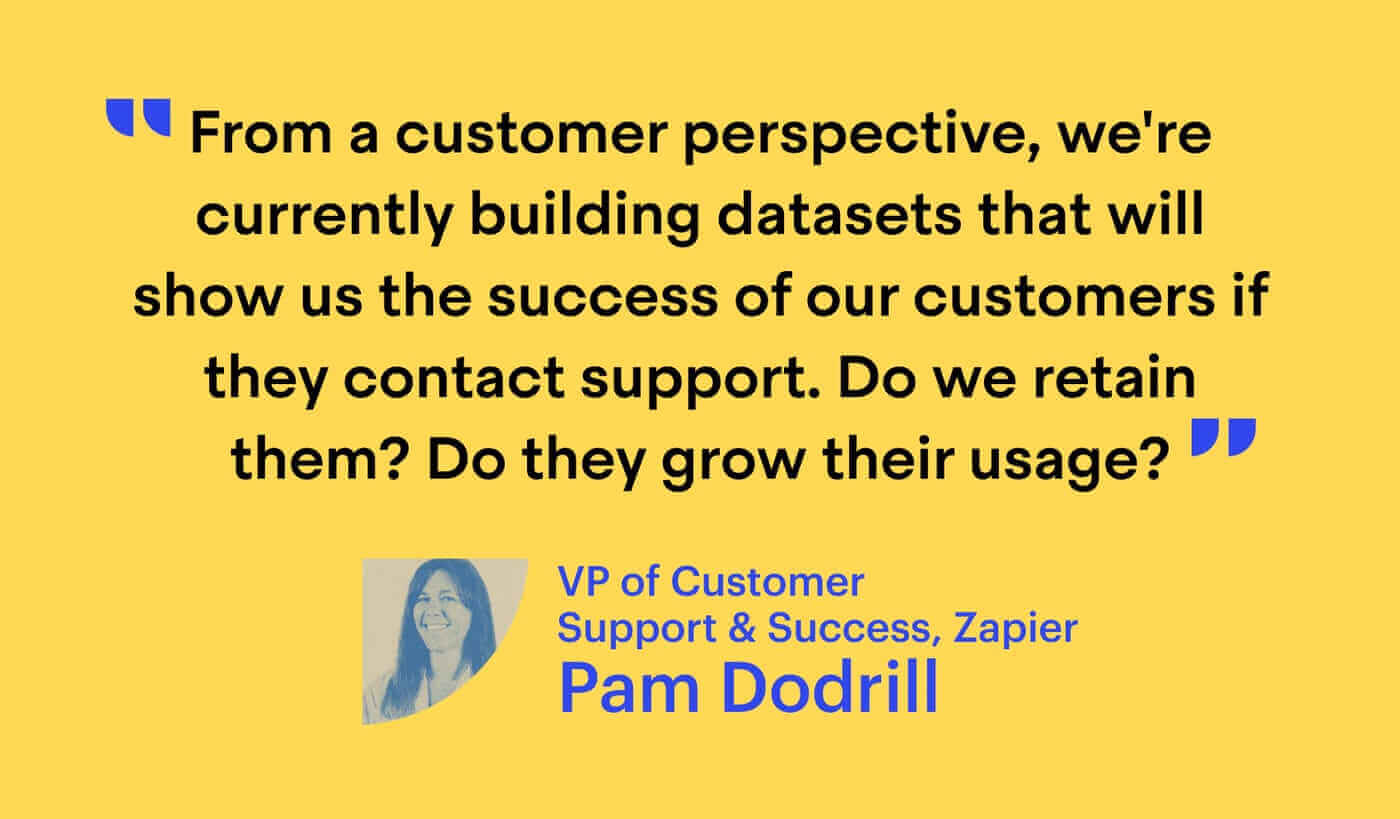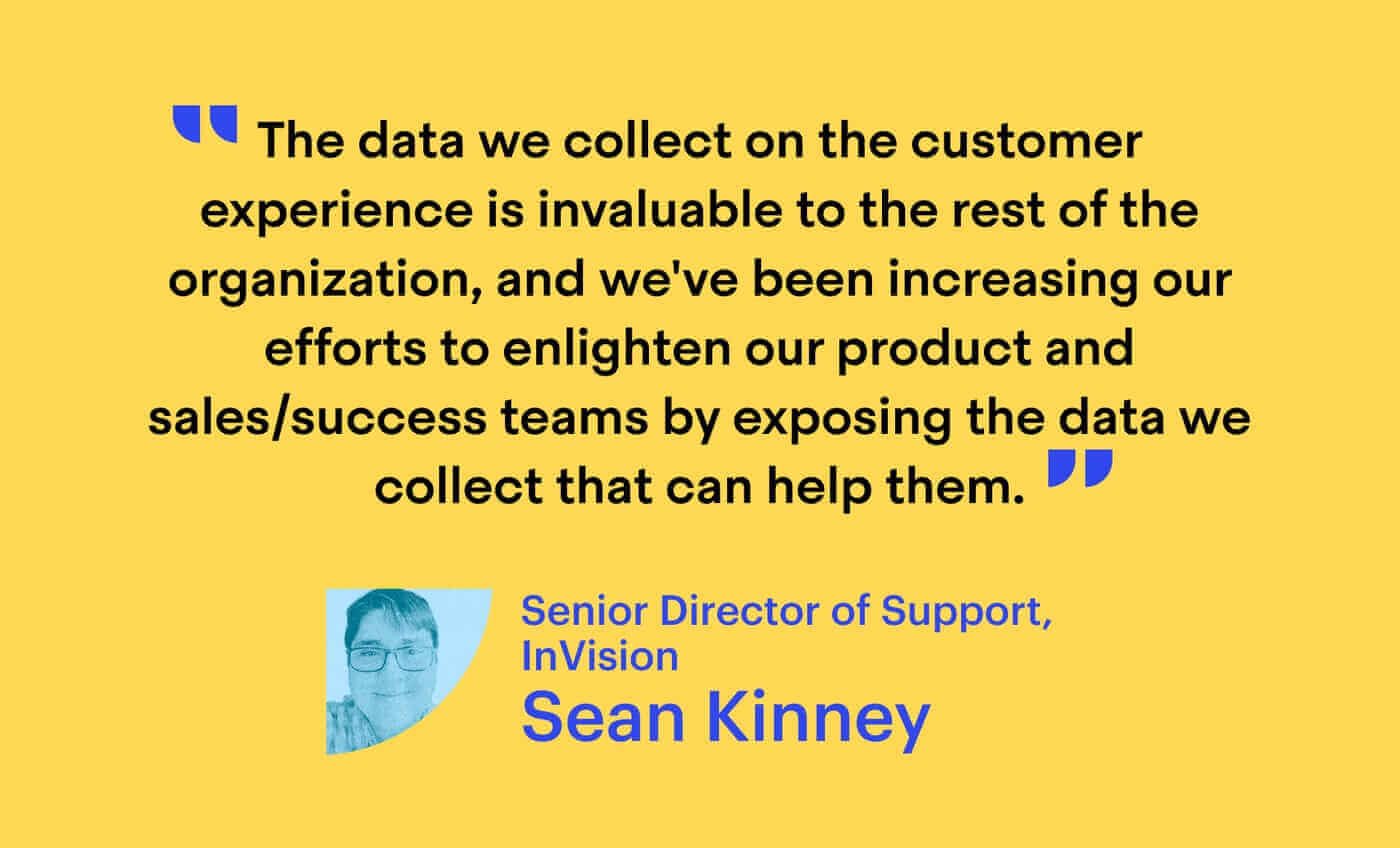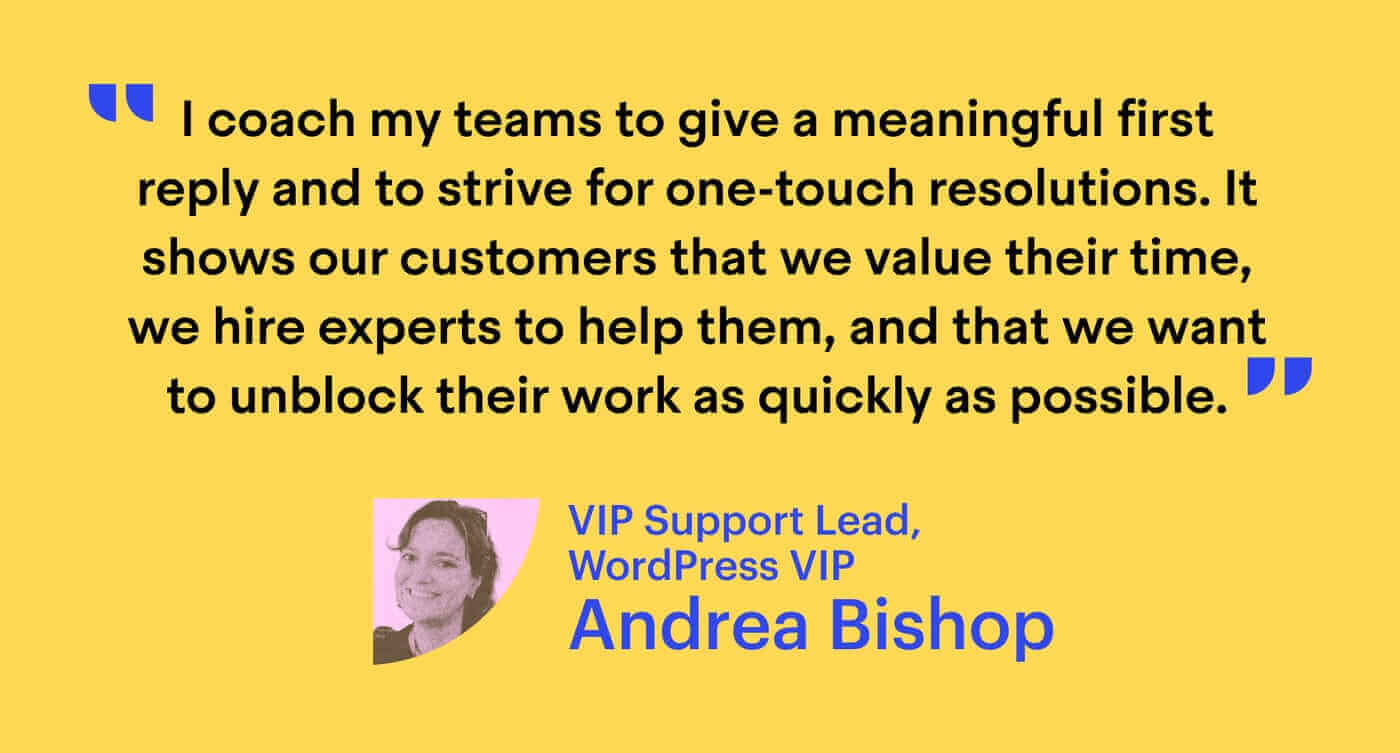In the not-too-distant past, customer support was viewed as a cost center – a necessary, but non-profitable, part of a business.
Today, more and more businesses are realizing the true bottom-line value that incredible customer service brings to a business – customer loyalty, retention, and advocacy to name but a few. In fact, customers don’t just seek out higher quality service – they’re willing to pay more for it.
With this shift in mindset, the key question becomes: “how can we measure the value of support and set metrics that drive meaningful change?” Rather than solely monitoring costs, support leaders are turning their attention to tracking the quality, speed, and long-term business impact of their customer experience.
We talked with support leaders at several customer-centric companies – including Zapier, Wistia, and InVision – to get insight into how their support metrics have evolved, and why.
From operational costs to bottom-line growth (👋 retention)
Gone are the days of tallying up costs and solely looking inward at operating overheads. To understand the true measure of support success, today’s modern support leaders are looking at the overall health of the business. And the metric that makes one of the biggest impacts on your business health is how well you’re able to retain your customers.
It’s no surprise then, that our study of almost 600 support leaders revealed that 30% of support teams planned to measure customer retention and 25% planned to do the same for renewals in the next year.

Leading companies like Zapier are increasingly monitoring bottom-line metrics like customer retention and expansion to determine whether or not their support efforts are paying off. Zapier’s VP of Customer Support & Success Pam Dodrill says her teams are doing this by looking at long-term usage:

After all, what good is a single positive interaction if the customer runs into another issue and churns two days later? By tracking retention, Zapier can identify whether or not their efforts are actually helping their customers find success with the product a month, year, or decade later.
Recent research from ProfitWell backs up this approach. Their study found that companies “with some sort of customer success function” see a 10% boost in net retention when compared to those without. If any business with a customer success function can boost their retention, imagine the competitive advantage you can gain by providing a world-class customer experience with the goal of retention as your North Star.
“Support teams are increasingly co-owning critical business goals and partnering with cross-functional teams to drive growth”
From siloed org to cross-functional success
Until recently, many support teams worked in isolation, tracking siloed metrics tied to operational costs. Today, forward-thinking businesses are bringing support into the cross-functional fold. It takes a village – every team from support, to product, to marketing, to sales – to improve bottom-line business metrics like customer retention, renewals, and loyalty. Support teams are increasingly co-owning these critical business goals and partnering with cross-functional teams to drive growth.
“It’s really, really important to have that customer mindset and ensure that, every step of the way, there’s an opportunity to connect the teams together and have the right conversations at the right times”
Delivering an exceptional customer experience that exceeds expectations is a challenge that everyone, including support, needs to tackle together. Instead of thinking “our team is doing fine – just look at our CSAT score” or “that’s not our job,” support, sales, and customer success teams should look to sync up and ensure they have visibility over the customer history through their tools and systems.
Leandra Fishman, Intercom’s Chief Revenue Officer, uses the analogy of baton passing. “We’re all in a relay and the customer is the baton,” she says. “You can think about that in terms of processes – making sure customers don’t fall through the cracks or get frustrated in the process. It’s really, really important to have that customer mindset and ensure that, every step of the way, there’s an opportunity to connect the teams together and have the right conversations at the right times.”
Improving the product and customer journey with data
Empowered support teams can help drive improvements across the entire customer journey. How? By sharing qualitative and quantitative customer data. It’s no secret that your support team is deeply familiar with your customers’ pain points, issues, and goals. They’re better placed than anyone else in your organization to:
- Share and champion the voice of the customer to help improve your product roadmap.
- Empower marketing and sales to speak to customers in ways that deeply resonate with them and increase purchases.
- Provide a great customer experience at every stage of the funnel, boosting customer loyalty and advocacy.
That’s why leading companies like InVision prioritize sharing critical information on the customer experience with relevant teams, like product and sales. Former Senior Director of Support at InVision, Sean Kinney, says:

According to Sean, InVision’s support team tracks and shares hard data on issues that “seemingly” fall outside their realm of control, like bugs, UI/UX concerns, and new feature requests with relevant teams so they can proactively fix them. Sean says:
“We track the specific bugs, feature requests, and known limitations a customer encounters in a way that gives us hard data about the problems our customers face. We can use this data in the aggregate to prioritize issues based on number of customers impacted”
Boosting efficiency gains with self-serve and proactive content
Gathering this kind of quantitative data and real-life customer insights also empowers support teams to make improvements to their own support efficiency. For example, WordPress VIP’s support team keeps track of common questions, then addresses these issues in their self-serve and proactive support content so customers can help themselves. WordPress VIP’s Director of Support Andrea Bishop says:
“When someone has to take the time to ask questions, I approach it from the standpoint that our product, documentation, and onboarding need improvement. After we fix the issue in the ticket, we fix it again in one of those other areas to enable future customers to reach solutions on their own.”
Meeting rising customer expectations (👋 quality and speed)
It will come as no surprise that customer expectations are higher than ever. But here’s the problem: while 73% of support leaders say that customer expectations for their team are increasing, less than half (42%) are sure they’re actually meeting those expectations. Today, customers will settle for nothing short of fast, personal support – 24/7. Forward-thinking support leaders are listening to customer desires and adapting their support metrics and strategy to ensure they can meet accelerating demands.
“Forward-thinking support leaders are listening to customer desires and adapting their support metrics and strategy to meet accelerating demands”
It pays to be fast and meaningful
Zapier’s VP of Customer Success Pam Dodrill says that issue resolution time matters to their customers. After creating a Premium Support option, which promises responses to new tickets in one hour or less, Pam says that they’ve seen “a drop in churn for this customer base of approximately 4%.”
Andrea Bishop, Director of Support at WordPress VIP, agrees that it pays to be fast – and also personal. Andrea says her team is always striving to improve the accuracy of information provided across VIP’s multiple support channels. They focus on providing “meaningful” responses: aiming to solve issues with just one response.

From customer satisfaction to customer delight
How exactly should “quality” be measured? According to Stacy Justino, Director of Customer Happiness at Wistia, not by customer satisfaction alone. Support leads at Wistia regularly review the quality of their support responses through an internal peer review program with customer delight and quality consistency as their overarching goals. Stacy says:
“We introduced a peer review program to track quality. We want to make sure we are delighting our customers whenever they write into support. While CSAT is one facet of keeping tabs on this, reviewing our responses for quality on a regular basis is another way to keep up quality, customer delight, and consistency”
Modern support metrics drive meaningful change
While there are infinite metrics your support team could track, it’s important to identify what business outcomes you’re trying to solve for upfront. That will help you ensure you’re making and measuring the most impactful wins not just for your team, but also for your business’ growth trajectory and customers’ success.
Modern support teams don’t just focus on numbers on a dashboard or spend their days tallying up costs. Instead, they’re hyper-focused on setting impactful goals that drive meaningful, lasting business impact.
